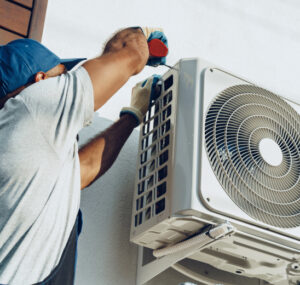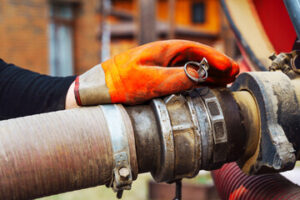Ducted air conditioning systems are usually installed in new homes. They require an outdoor unit and ductwork that runs throughout the house to bring cool air to different rooms.

It’s not a DIY-friendly project. Installing an air conditioner yourself could void your warranty or damage your equipment. For professional help, contact Air Conditioning Installation Los Angeles.
Air conditioning installation is a big project that involves many steps. Choosing an experienced contractor with a good reputation and track record can help ensure that your cooling system is installed correctly and will last for years to come. In addition, working with a contractor who understands your priorities and preferences can save you time and money. For example, a contractor who knows how much energy you use in your home may recommend a unit with a higher energy efficiency rating than one that is cheaper upfront.
During the initial consultation, an installer should ask you some important questions about your home and lifestyle. This information will help them determine the right size and type of air conditioner for your needs. They can also explain the benefits of different systems, including their upfront cost and energy efficiency. They should also be able to answer any questions you have about the installation process.
On the day of your air conditioning installation, an HVAC contractor and their team should arrive promptly. They should begin by introducing themselves to you and assessing the work site. They will then lay down drop cloths to protect floors and other surfaces from dust, debris, and dirt. This step is essential to prevent any damage to your property during the install.
In addition, the area where the equipment will be placed should be free of any obstructions. This will make the process easier for everyone involved. For example, if your air conditioner will be located outside, you should move any furniture or other items that might get in the way of the installation. You should also clear away any yard waste like large sticks, leaves, or hay bales. Finally, you should turn off any gas or electricity in the area where the new AC unit will be installed.
It is important to note that anyone who handles refrigerant must be EPA-certified. This includes the installation team, service technicians, and other contractors who might use the air conditioner in your home. It is illegal to hire a contractor who does not have an EPA certification.
Installation
When your specialized air conditioning installation team arrives at your house, they will begin by reviewing the job site. This is an important step because it allows them to determine if any special tools will be needed for the task, and they can bring those with them on the day of your install.
Next, they will enact safety procedures. This includes turning off the electric supply and gas service valves for your existing HVAC equipment. This will protect your new equipment from damage while the work is being done.
They will then uncrate your new AC unit and check it for any signs of damage that may have occurred in transit. They will also perform a test to ensure the unit is properly working. At this point, you should be notified if the unit has any damage, as this can affect its performance and lifespan.
If you have a window AC unit, your installers will use foam insulation to fill any gaps between the upper and lower window sashes. They will also add a weather strip around the bottom of your window, which helps block incoming air and keeps warm air from coming into your home.
Once the gap is filled and the weather strip is added, your AC will be placed in the window and attached to the sash track. Then, they will seal any remaining gaps with caulking. Finally, they will install a vent grill and sleeve to complete the look.
During this stage, you will discuss the size of your new AC with your contractor. They will help you find a unit that meets your cooling needs and matches the energy efficiency ratings of your home. Your contractor will also explain the difference between SEER and COP, which are two common ways to measure how efficient an air conditioner is.
Your contractors will also talk to you about other options that may be available, such as ductwork replacement. It is at this stage that you should consider your priorities regarding upfront costs and energy efficiency. They will ask questions about your lifestyle, home environment and preferences to better understand what type of AC system you need.
Commissioning
In many cases, HVAC systems are simply turned on and left to run their course. While some companies may be able to make this work, it’s inefficient and puts the system at risk. Proper commissioning is a detailed process that requires training and equipment. Performing this correctly ensures the system meets industry standards and is working the way it’s supposed to.
The goal of commissioning is to make sure the air conditioning unit is performing correctly and efficiently, meeting all client requirements and design specifications. A full commissioning should include an analysis of the HVAC system and a thorough walkthrough of the installation to ensure it meets all standards. It is important that this be done at the earliest opportunity, before any occupants move in or start using the space. This will provide an opportunity to uncover any issues and give the installation team time to fix them before they are used in production.
During the commissioning process, technicians should check all components of the system, including the electrical and mechanical connections, to ensure they’re functioning properly. They’ll also ensure that the units are ‘addressing’ correctly, meaning that each indoor and outdoor unit has the right number on it to communicate with each other. This is especially critical for VRF (variable refrigerant flow) systems, where communication between indoor and outdoor units can be tricky.
In addition, the technician will verify all the thermostats are set to the correct temperature settings and ducting is properly connected. This can be a tedious task, but it’s one that shouldn’t be skipped. It can be difficult to determine if a ductwork problem exists without inspecting it, and addressing it now could help prevent future problems.
Finally, the commissioning team will collect and analyze the data from the HVAC system to see how it’s operating. This information will be useful in the future for yearly maintenance or repairs, and will provide a baseline to measure against in case of any problems. It will also allow the air conditioning installer to document that the system is meeting or exceeding industry standards, which should give any building owner peace of mind knowing they’re getting a quality product.
Maintenance
When you get an AC system installed, it is important to perform maintenance on it. These activities can prevent it from breaking down and save you from expensive repairs in the future. They also extend the life of the unit. It is also a good idea to hire HVAC professionals for regular maintenance because of their knowledge in dealing with electric wiring.
First, turn off power to the air conditioning unit by switching it off at the breaker box. Next, remove the fan cage and fan grill from the top of the unit. Using a screwdriver or wrench, loosen fasteners and lift the cage or grill from the top of the unit. Then clean the fan and inside of the unit with a wet/dry vacuum. You should also check and clear the drain line access point, which is usually covered by a PVC cap. If it is clogged with dirt, debris or leaves, then clear the entry point and fill the opening with a 50/50 mixture of vinegar and water.
During maintenance, the technician will test the voltage, inspect the condition of the belts and motors, check the refrigerant levels, and lubricate all ports. They will also inspect the evaporator coil and thermostat. The evaporator coil is the other half of the HVAC system and can be found in closets or finished basements. Access to this part of the system can be restricted by ductwork or other barriers that might make it difficult to reach the coil.
In addition to examining the air conditioner, the technicians will also inspect the ductwork, duct insulation and vents. The ducts are the pathways that the air passes through in each room of the house. Depending on the system design, the ducts may have louvres to direct the flow of air or they might be straight. The ducts should be free of dust, mold and other contaminants.
A regular maintenance schedule can help you save hundreds or even thousands of dollars in air conditioning costs. However, these savings will be offset by the cost of repairing a broken down air conditioner. It is better to have a professional service the air conditioner once a year to ensure that it works as efficiently as possible.

